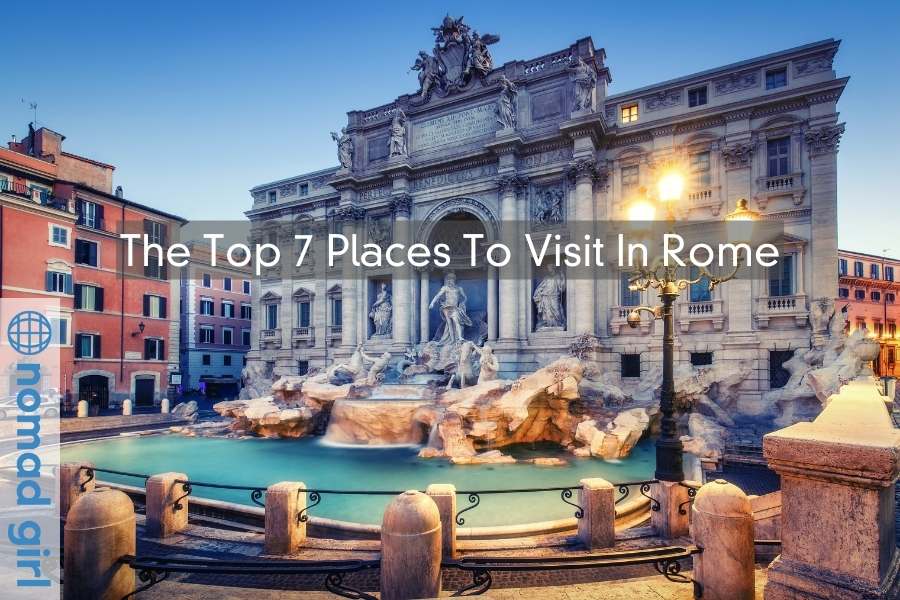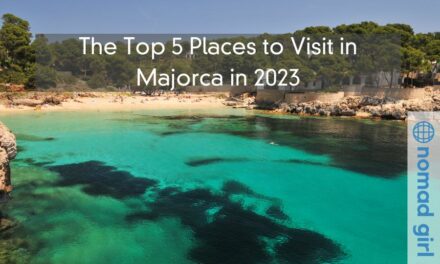Rome is the capital of Italy and one of the most well-known cities in the world. If you are going to the Eternal City, you need to know where to go and what to see. Here are the top 7 places to visit in Rome. This is important because Rome is the city with the most monuments in the world and seeing them all will take a really long time. Fortunately, there are some places you have to visit when you go to Rome whether for their historical value or their sheer strangeness of them.
1. The Colosseum And Roman Forum
No trip to Rome will be complete without visiting the Colosseum and Roman Forum. The Colosseum is to Rome what the Eiffel Tower is to Paris. It is one of those monuments that are so iconic that you have a hard time believing it when you see it.
When I was in Rome, I took one of the city tour buses and will never forget the awe that I felt when I first laid eyes on the Colosseum. The sheer size of the monument was awe-inspiring and is even more impressive when you realize that it was built in 70 to 80 AD. Standing next to the Colosseum made me feel even shorter than I am and is something that everyone has to experience.

While you are at the Colosseum, you should head to the Roman Forum and Palatine Hill. They are all located in the same archaeological area right next to each other. I would recommend taking a day to view this area because of the size of it and the number of people you have to contend with.
The Roman Forum is a sprawl of ruins and was originally an Etruscan burial ground. The initial development of the site happened in the 7th century BC and it continued to grow during the time of the Roman Empire. There are a lot of ruins to see and it would be better to get a guidebook or take one of the tours that are on offer.

2. Vatican City
When in Rome, you have to take time to visit Vatican City. While Vatican City is technically a different country, you can easily visit and view 2 of the most popular attractions in Rome. They are the Vatican Museum and St Peters Basilica.
A word of the wise when visiting Vatican City, get there early and plan to spend the whole day there. Vatican City is larger than you might think and there is around a 20-minute walk between the main attractions. You also need to dress appropriately or you will not be allowed to enter. Long trousers and shirts with sleeves are a must when you visit even in the hot summer months. You will also want to leave your bag at your accommodation as you have to check it in when visiting some of the sites.
You will have to pay to enter the Vatican Museum, but there are some free days. If you are going on one of the free days, you need to prepare for massive queues and a lot of people. I went to the Vatican on a normal day during tourist season and found myself in a massive queue waiting to get in.
You should also eat a large breakfast before you head to Vatican City. The Vatican Museum Café does have some food available, but it is not the best. The restaurant scene around the city is also not Rome’s finest so you could be very hungry by the time you are done.

3. Santa Maria Maggiore
While St Peters is one of the churches that everyone knows about and wants to see, you should take the time to visit the basilica of Santa Maria Maggiore as well. This is one of the 4 Patriarchal Basilicas of Rome and stands on Esquiline Hill’s summit. This is a spot where it is said to have snowed miraculously in the summer of 358 AD.
You should try and get to the basilica on 5 August because this is when a commemorative event takes place each year. To commemorate the snow, thousands of while petals are released from the coffered ceiling and this is something you have to see. The falling white petals are amazing, but you do need to get there early to ensure that you actually see it.
This is not the only reason why you should head to the basilica. The Museo del Tresoro or Treasury Museum has a glittering collection of religious artefacts. The upper loggia of the church is only accessible with a guided tour, but you should seriously consider this as you are able to get a close view of the 13th-century mosaics.

4. Borghese Gardens And Gallery
If you are looking for some greenery in Rome, you should head to the Villa Borghese Gardens. This is the most popular park in Rome and is located on the Pincian Hill. It is close to the Spanish Steps and the Piazza del Popolo.
The gardens themselves cover over 80 hectares of land and were created by Cardinal Scipione Borghese in 1606. At the same time, the Cardinal commissioned the building of Villa Borghese which is the home of the Borghese Gallery. The Gardens became a public park in 1903 when they were redesigned in the English Style.
While walking around the Gardens, you should take the time to visit the Borghese Gallery. This is the perfect place for art lovers who want to avoid the massive crowds of the Vatican Museum. The gallery features the private collection of Cardinal Borghese and includes pieces from Rubens, Raphael and Bernini. I found that one of the best things about this gallery is the timed reservation system. This system will keep crowds to a minimum, but it means that you need to book tickets and they are limited.

5. The Pyramid Of Cestius
The Pyramid of Cestius is one of the lesser-known attractions of Rome. The pyramid looks small from the distance but is actually rather large when you finally get to it. Many people do not know that the ancient Romans were fascinated with Egypt and this directly leads to the Pyramid of Cestius being built.
The pyramid is actually a tomb, as the Great Pyramids in Egypt are, and was built for Gaius Cestius. The entire pyramid took 330 days to build which is fairly impressive when you think that it was created in 12 BC. If you have been to see the pyramids in Egypt, you will notice that this one is edgier and this is due to the use of bricks.
The pyramid is contained within the Aurelian wall which surrounds the city centre of Rome. As the wall was maintained, the pyramid was maintained as well. However, the burial chamber of the pyramid is not open to the public, which I found disappointing because this is where the ancient frescoes are located.

6. The Catacombs Of San Sebastiano
If you don’t mind heading underground, the catacombs of San Sebastiano are a must-see in Rome. The Catacombs are known as one of the Seven Pilgrim Churches of Rome and have been a place of pilgrimage for Christians for centuries. The Catacombs are located on the 4 mile stretch of Via Appia.
While the basilica which was erected over the burial site of San Sebastiano is impressive on its own, you need to head to the subterranean burial area. I was told about the catacombs by a friend and would not have considered going before because I am more above the ground church visitor. The catacombs do not have as much as the others in the area, but there is an amazing Roman tomb which has been preserved from the necropolis which was adjacent to the original catacombs. The stucco decorations on the ceilings as well as the frescoes have been almost perfectly preserved and this is really something wonderful to see.

7. Saint Catherine Russian Orthodox Church
While there are over 900 churches in Rome, this is one that is very different to all of the others. When the Great Schism happened and the Catholic Church spilt, both sides took less than accommodating stances. This has been warming up in recent years and culminated in the Church of the Great Martyr Saint Catherine being built in Rome. This is the first Russian Orthodox Church to be built in the Eternal City and is unapologetically Russian.
The other churches in Rome have classical architecture which you would expect from them. The Saint Catherine Russian Orthodox Church is very different and offers the traditional onion-shaped dome of Orthodox churches. The painting of the inside of the sanctuary was done by artists from Russia. Housed in the church are the relics of Saint Helen and Saint Alexius.

Image credit: AdamTKincaid
There is a lot to see in Rome and you should never think that you can see it all in one trip. If you are heading to the Eternal City for the first time, you should visit the major attractions. You should also look at some of the lesser-known ones as it will give you a break from the crowds.
Italy Digital Nomad Visa
Do you dream of staying longer in Italy beyond the 90 days per 180 days of a Schengen Visa. At the start of April 2024 Italy launched its long-awaited Italy Digital Nomad Visa. You can read more about it here:
http://newsite.nomadgirl.co/italy-digital-nomad-visa/


















